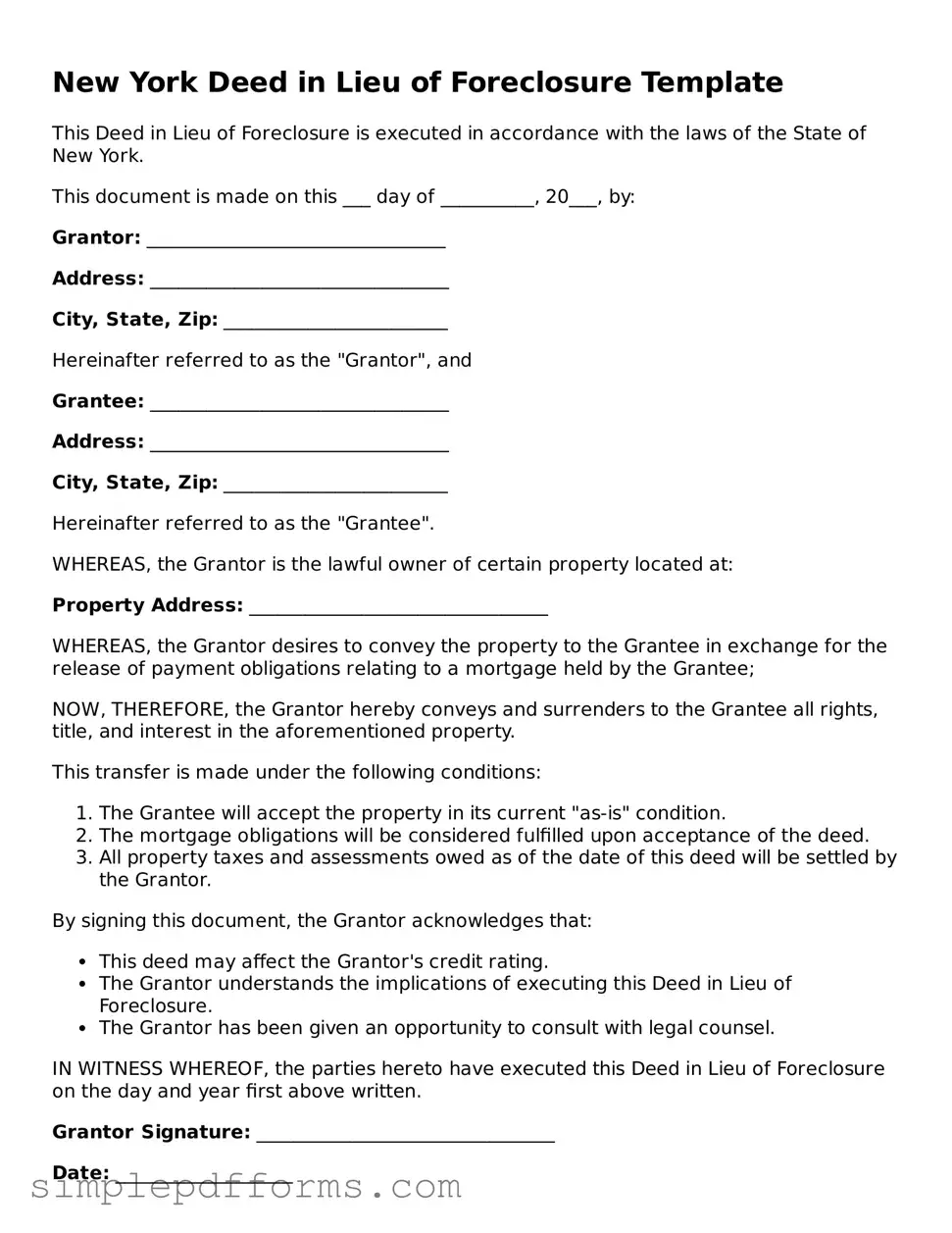New York Deed in Lieu of Foreclosure Template
This Deed in Lieu of Foreclosure is executed in accordance with the laws of the State of New York.
This document is made on this ___ day of __________, 20___, by:
Grantor: ________________________________
Address: ________________________________
City, State, Zip: ________________________
Hereinafter referred to as the "Grantor", and
Grantee: ________________________________
Address: ________________________________
City, State, Zip: ________________________
Hereinafter referred to as the "Grantee".
WHEREAS, the Grantor is the lawful owner of certain property located at:
Property Address: ________________________________
WHEREAS, the Grantor desires to convey the property to the Grantee in exchange for the release of payment obligations relating to a mortgage held by the Grantee;
NOW, THEREFORE, the Grantor hereby conveys and surrenders to the Grantee all rights, title, and interest in the aforementioned property.
This transfer is made under the following conditions:
- The Grantee will accept the property in its current "as-is" condition.
- The mortgage obligations will be considered fulfilled upon acceptance of the deed.
- All property taxes and assessments owed as of the date of this deed will be settled by the Grantor.
By signing this document, the Grantor acknowledges that:
- This deed may affect the Grantor's credit rating.
- The Grantor understands the implications of executing this Deed in Lieu of Foreclosure.
- The Grantor has been given an opportunity to consult with legal counsel.
IN WITNESS WHEREOF, the parties hereto have executed this Deed in Lieu of Foreclosure on the day and year first above written.
Grantor Signature: ________________________________
Date: ___________________
Grantee Signature: ________________________________
Date: ___________________
STATE OF NEW YORK
COUNTY OF __________________
On this ___ day of __________, 20___, before me personally appeared __________________, known to me to be the person described herein and who executed the within instrument, and acknowledged that he/she executed the same.
Notary Public Signature: ________________________________
Commission Expires: ________________________________
